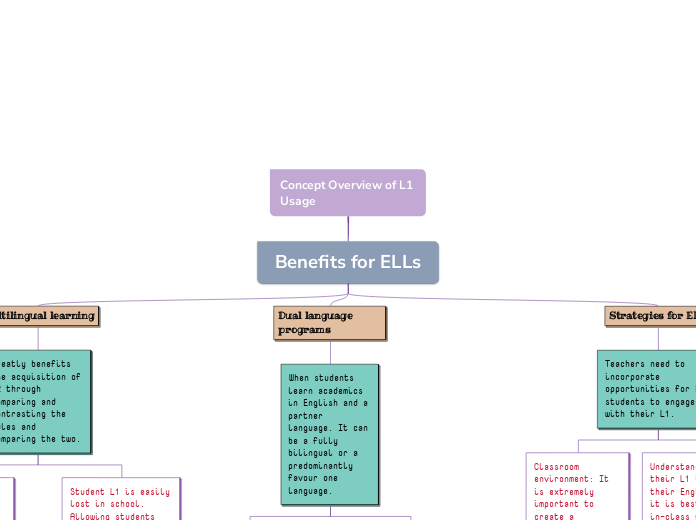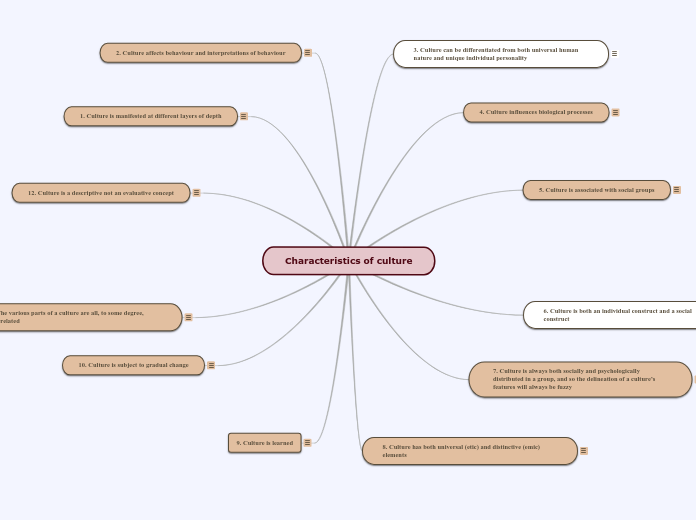Concept Overview of L1 Usage
Benefits for ELLs
Strategies for ELL
Teachers need to incorporate opportunities for ELL students to engage with their L1.
Understand that students using their L1 is not a detriment to their English acquisition. In fact, it is best to provide opportunities in-class for students to engage with their L1. A practical example can be to allow for a language partner to confer with another student in their L1 to clarify tasks.
It is often seen that students gradually lose their L1 in favour of English in Canada, but this does not need to be the case. make this clear from the start, while still providing ample opportunity to practice English.
Classroom environment: It is extremely important to create a welcoming environment for students. Make sure their linguistic and cultural backgrounds are appreciated, and prior experience is valued.
Dual language programs
When students learn academics in English and a partner language. It can be a fully bilingual or a predominantly favour one language.
It enables students to draw on their strengths and existing knowledge. It is also a benefit for parents who may become more involved in a student's learning.
Engaging students in their original language community can also find them peers who share cultural experiences with them.
This has shown to have cognitive benefits such as decreased dementia and Alzheimer's, as well as higher academic achievement.
Multilingual learning
Greatly benefits the acquisition of L2 through comparing and contrasting the rules and comparing the two.
Student L1 is easily lost in school. Allowing students the opportunity to use their L1 to supplement their L2 learning is a net positive. In addition to L2 benefits, being bilingual has cognitive benefits that may carryover into other areas of academics.
L1 acquisition is a strong indicator of L2 prospects, indicating that the language skills are transferrable to a certain extent.
Why not allow students to engage with their L1 first and then apply English?









